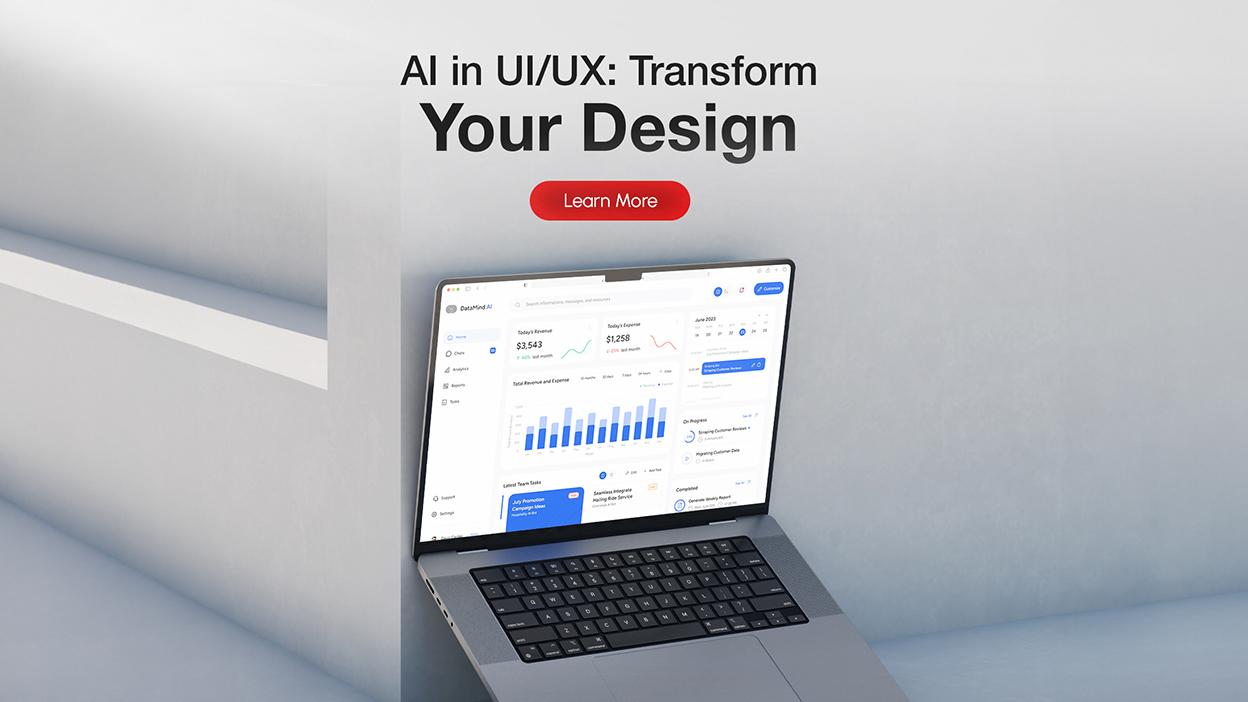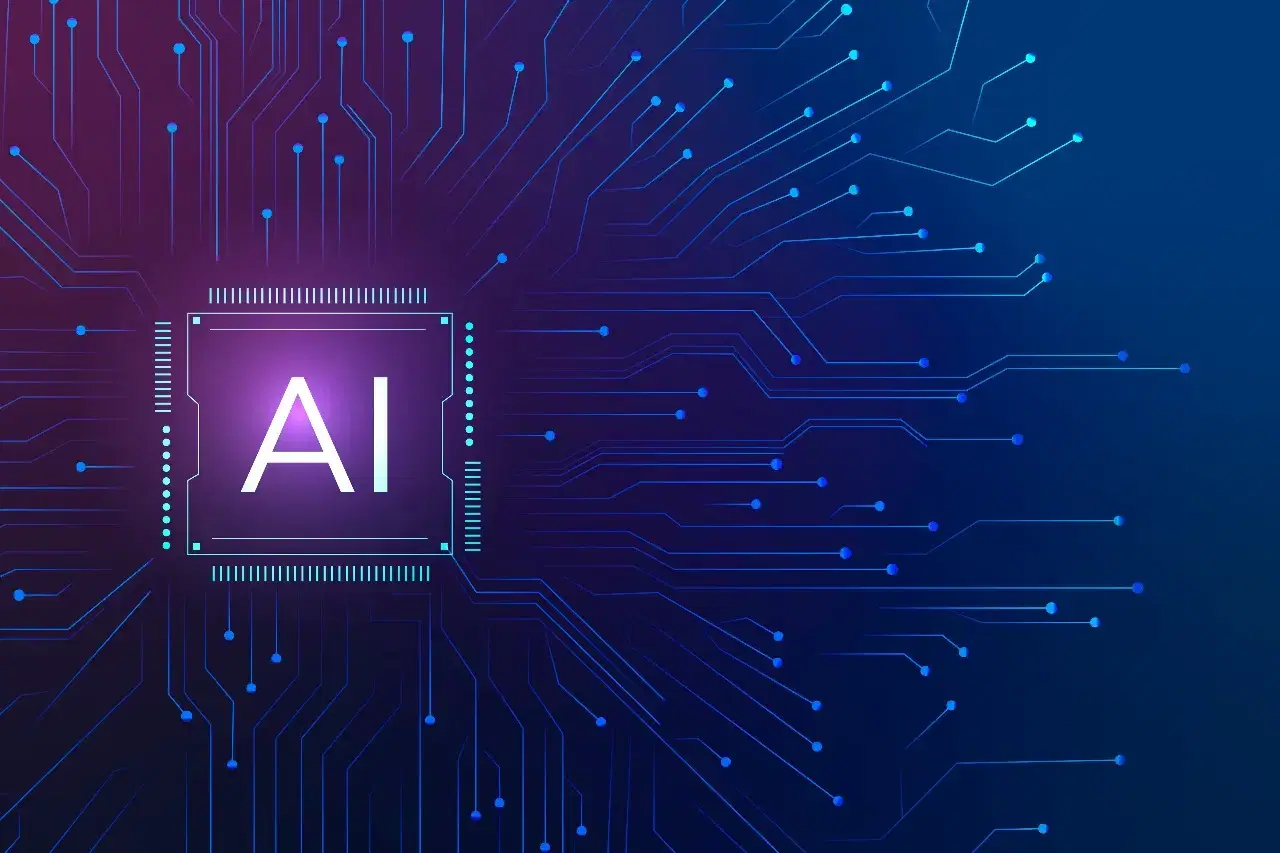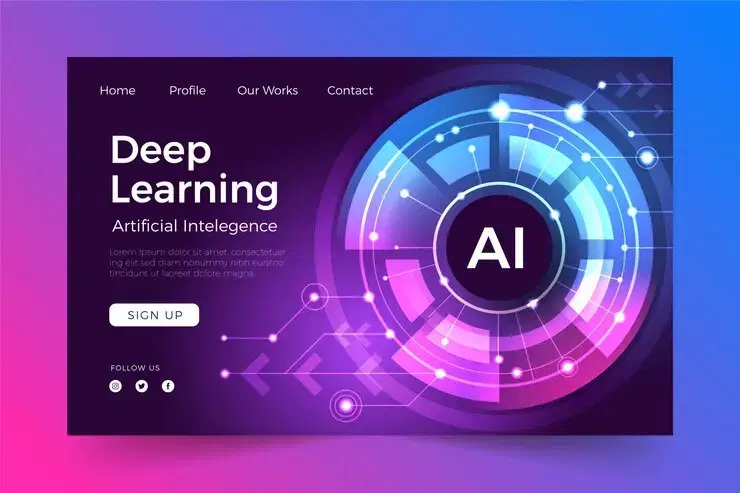AI and Machine Learning in UI/UX Design
Author
Share This Article

Table of Contents
AI and Machine Learning in UI/UX Design: Revolutionizing User Experiences
Introduction
In today’s digital age, the integration of AI and machine learning in UI/UX design is transforming how users interact with technology. As businesses strive to create more personalized and efficient user experiences, understanding the role of these advanced technologies becomes essential. This article delves into how AI and machine learning are revolutionizing UI/UX design, offering insights on leveraging these innovations to enhance user engagement and drive business success.
Table of Contents
Introduction
Understanding AI and Machine Learning in UI/UX Design
Personalized Interfaces: Creating Tailored User Experiences
Predictive Analytics: Anticipating User Needs
Enhancing User Interactions with AI
Practical Applications of AI in UI/UX Design
The Future of AI and Machine Learning in UI/UX
Conclusion

Understanding AI and Machine Learning in UI/UX Design
AI (Artificial Intelligence) and machine learning are no longer just buzzwords; they are pivotal components in modern UI/UX design. AI involves creating systems that can perform tasks that typically require human intelligence, such as visual perception, speech recognition, decision-making, and language translation. Machine learning, a subset of AI, involves algorithms that allow systems to learn from and make predictions based on data.
In UI/UX design, these technologies analyze user behavior, predict future actions, and personalize user interfaces to improve engagement and satisfaction. AI in design and machine learning UI are essential for creating intelligent interfaces that adapt to user needs. Incorporating AI UX design principles ensures a seamless and intuitive user experience.

Personalized Interfaces: Creating Tailored User Experiences
Personalized interfaces are at the heart of enhancing user experiences. AI and machine learning enable the creation of dynamic interfaces that adapt to individual user preferences and behaviors. Here’s how:
User Data Analysis: AI algorithms analyze user data, such as browsing history, click patterns, and interaction data, to understand preferences and behaviors. This analysis is crucial for personalized user interfaces with AI.
Content Personalization: Based on this analysis, the system can present personalized content, product recommendations, and tailored user journeys, making the interaction more relevant and engaging. Tailoring user experiences with machine learning leads to higher user satisfaction.
Adaptive Layouts: Machine learning models predict the most effective layout and design elements for different user segments, optimizing the interface for better usability and satisfaction. AI-driven UI customization enhances the overall user experience.

Predictive Analytics: Anticipating User Needs
Predictive analytics leverages AI and machine learning to forecast future user actions and needs. This proactive approach can significantly enhance the user experience:
Behavior Prediction: By analyzing past behaviors and patterns, AI can predict what users are likely to do next, allowing for preemptive adjustments to the UI. This is a core aspect of predictive analytics UX.
Personalized Recommendations: Predictive models can suggest products, services, or content that users are most likely to be interested in, increasing engagement and conversion rates. AI predicting user behavior ensures that users receive relevant recommendations.
Proactive Problem Solving: Anticipating user issues before they arise helps in creating smoother, more intuitive user journeys, reducing friction and frustration. Machine learning user needs anticipation leads to higher satisfaction.
Enhancing User Interactions with AI
AI and machine learning can enhance user interactions by making interfaces more intuitive and responsive:
Natural Language Processing (NLP): NLP allows users to interact with systems using natural language, making interfaces more accessible and user-friendly. This is a key component of AI user interaction.
Chatbots and Virtual Assistants: AI-powered chatbots and virtual assistants provide instant support and guidance, improving user satisfaction and retention. Machine learning UI enhancement ensures efficient user support.
Visual Recognition: AI can enable features like image and facial recognition, allowing for innovative interactions such as gesture-based navigation and personalized content delivery. Interactive UI with machine learning offers a more engaging experience.

Practical Applications of AI in UI/UX Design
Several practical applications demonstrate how AI and machine learning are transforming UI/UX design:
Smart Content Curation: AI can curate content based on user preferences and past interactions, ensuring that users always see relevant and engaging information. This is one of the practical AI applications in UX design.
Dynamic User Testing: Machine learning models can simulate user interactions, providing designers with valuable insights into potential issues and areas for improvement. Real-world machine learning UX examples highlight the effectiveness of this approach.
Personalized User Onboarding: AI can create tailored onboarding experiences that adapt to each user’s learning pace and preferences, improving initial engagement and retention. AI-driven UI/UX design solutions make onboarding more effective.

The Future of AI and Machine Learning in UI/UX
The future of UI/UX design lies in the continued integration of AI and machine learning. Emerging trends include:
Augmented Reality (AR) and Virtual Reality (VR): AI will enhance AR and VR experiences, making them more immersive and interactive. This trend is pivotal in the future of AI UX.
Emotion AI: By analyzing facial expressions, voice tones, and other biometric data, AI will be able to gauge user emotions and adjust interfaces accordingly. Emotion AI represents significant machine learning design future.
Hyper-Personalization: AI will enable even more precise personalization, creating unique user experiences tailored to individual needs and preferences. The future of AI in user experience design will focus heavily on hyper-personalization.
Conclusion
AI and machine learning are revolutionizing UI/UX design by creating more personalized, predictive, and engaging user experiences. By understanding and leveraging these technologies, businesses can enhance user satisfaction, increase engagement, and stay ahead in the competitive digital landscape.
For more insights on how to integrate AI and machine learning into your UI/UX design strategy, read our full article and stay tuned for more tips and trends from Zorg IT Group.